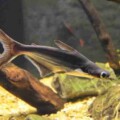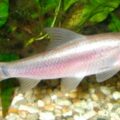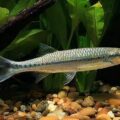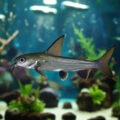The shiny silver and black Bala Shark is a worthy centerpiece for your large aquarium. This guide contains a comprehensive overview on keeping this species from tank setup and feeding to health care and breeding.
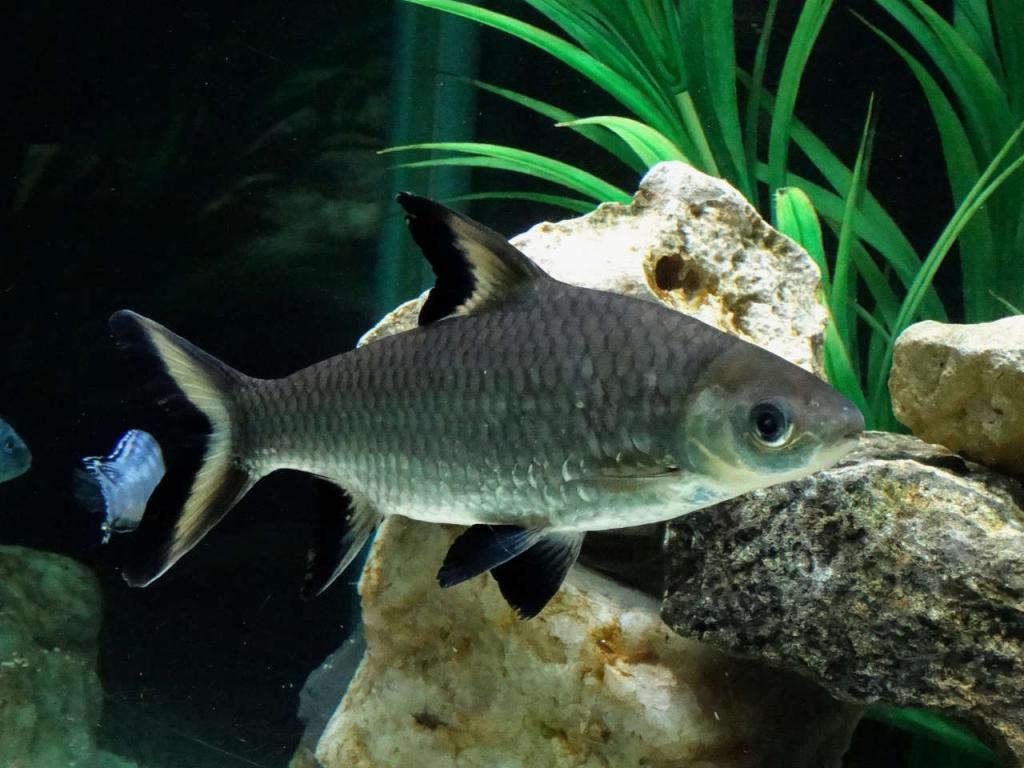
Bala Shark (Balantiocheilos melanopterus): A Peaceful Giant for Spacious Aquariums
Are you an intermediate or expert aquarist looking for a large community aquarium fish to grace your tank? Then look to Balantiocheilos melanopterus, commonly known as the bala shark fish.
This species is an active freshwater fish with a metallic silver body and bold black fin edges that’ll stop anyone in their tracks. Despite having a scary name and bold presence, you’ll learn in this Balantiocheilos melanopterus overview that the Bala Shark isn’t a true shark.
In fact, it has a peaceful temperament and schooling behavior that is suitable for community living. Read this Bala Shark freshwater profile for insight into this non-threatening, large fish.
Author’s Note: Check out our post on the 14 Small & Big Freshwater Pet Sharks for more Freshwater Home Aquarium compatible shark lookalikes.
Natural Habitat and Behavioral Traits
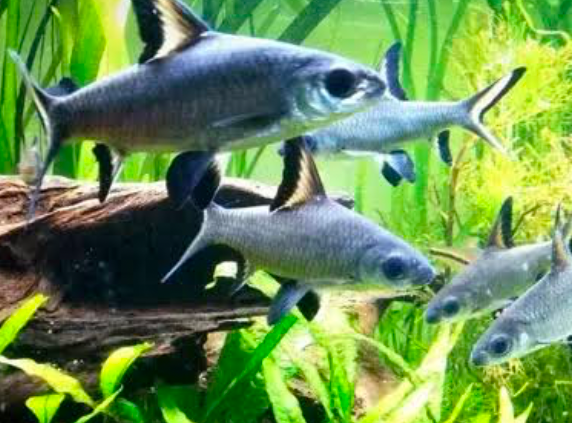
The Balantiocheilos’ natural environment is the fast-moving rivers of Southeast Asia. Thus, they show active fish species traits like strong swimming instincts, schooling behavior, and the need for consistent space to reduce stress and erratic movement.
Because of this shoaling freshwater fish behavior, your Bala Shark needs specific conditions in its tank setup, more up next.
Creating the Right Aquarium Setup for Bala Sharks
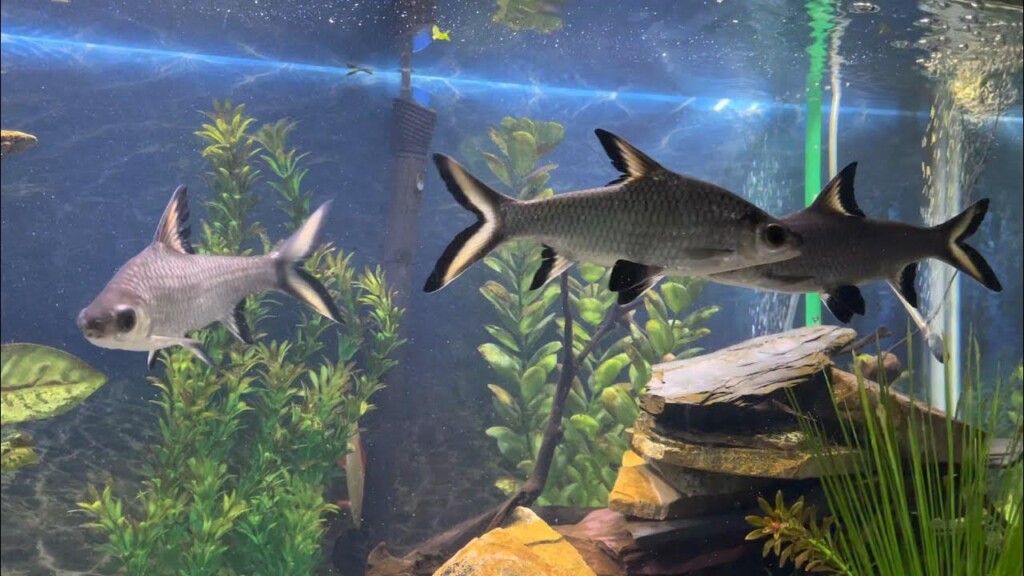
Bala Shark tank requirements include width, vegetation, specific water conditions, safety lids, and interactive decor for their engagement.
Let’s get into the details of this large fish aquarium setup and schooling needs.
Note the importance of water movement and secure lids, as they are powerful jumpers.
Tank Size
To accommodate a small group of adult Bala Sharks, get a minimum tank size of 125 gallons. A rectangular container is better to encourage their habits.
Décor & Layout
Decorate this aquarium with an active swimmer tank design layout in mind. Create open swimming spaces by arranging tall plants along edges and using safe, rounded rocks for hiding spots.
Cover the floor with fine sand, whether white or brown, to highlight your Bala Shark’s black and white scales.
Filtration & Safety
Finally, let’s set the water parameters and safety measures.
| Temperature | 72 – 82°F |
| pH | 6.5 – 8.0 |
| Hardness | 5 – 12 dGH |
Use a moderate-pressure filtration system to keep the water clean and healthy for your Bala Shark’s comfort.
A moderate to fast water flow encourages their strong swimming instincts, while a tight lid keeps the group from jumping out.
Identifying Features and Growth Expectations

Identifying Balantiocheilos melanopterus is easy through their obviously unique appearance, but you also need to know their unique traits to distinguish them from similar-looking species.
We’ll start with the Bala Shark appearance, including their 12–14 inches long body shapes and coloration, and end with their characteristics.
Color Pattern
Bala Sharks have a torpedo-shaped silver body with high-contrast black-edged fins. Their transparent metallic silver fins have faint yellow accents and a thick black trim.
Unique Traits
Bala Sharks show freshwater giant fish characteristics like horizontal rapid swimming and skittishness in isolation. That’s why they need long tanks with companions to reduce the risk of stress.
Feeding the Bala Shark: Energy-Packed Diet Options
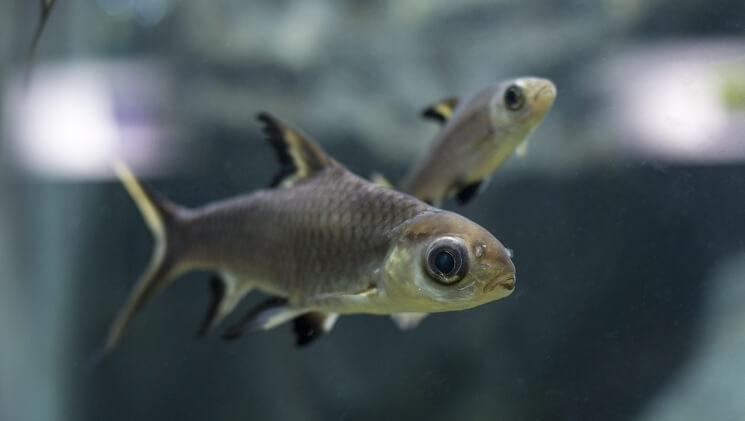
The key to making a healthy nutritional plan for large aquarium fish is understanding their needs and balancing them against their dietary preferences.
Bala Sharks are omnivorous pets who eat a variety of foods for energy and steady growth.
Feeding Frequency
Creating a Bala Shark feeding routine helps you provide the right nutrition for your pets without overfeeding or underfeeding them.
Feed them 2–3 times daily in small portions to reduce wastage and bloating.
Diet Suggestions
Another omnivore fish diet strategy that works is mixing different types of foods.
Serve your Bala Shark Protein-based pellets, high-quality flakes, and bloodworms as staples, as well as spirulina, insect larvae, and chopped vegetables as supplements.
Author’s Note: For more on feeding your aquatic pets check out The Ultimate Guide to Fish Food: Pros and Cons & Best Choices!
Choosing Compatible Tank Mates
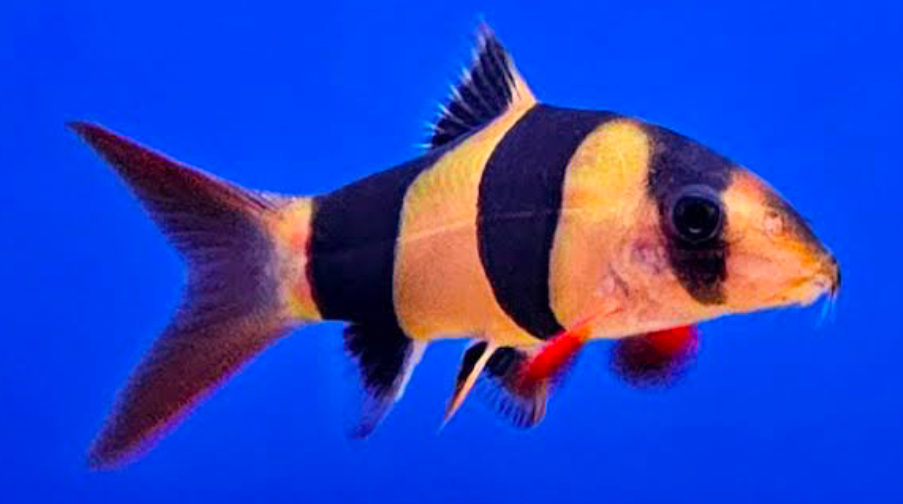
Tank mates that are big enough not to be mistaken as food and are also energetic are compatible species for active swimmers like the Bala Shark.
Compatible Species
Silver dollars, rainbowfish, and clown loaches are peaceful fish for big tanks housing large species like the Bala Shark.
Species to Avoid
Avoid slow, long-finned species and fin-nippers like Small tetras, bettas, and aggressive cichlids as tankmates for bala sharks.
Breeding Challenges and Captive Reproduction
Reading this overview may spark an interest in Bala Shark reproduction in your home aquarium, but I must warn you that it’s a complex activity.
Due to their size, group requirements, and complex breeding behaviors, captive breeding of Balantiocheilos is almost impossible. Successful aquarists are often experts with commercial farms in large facilities.
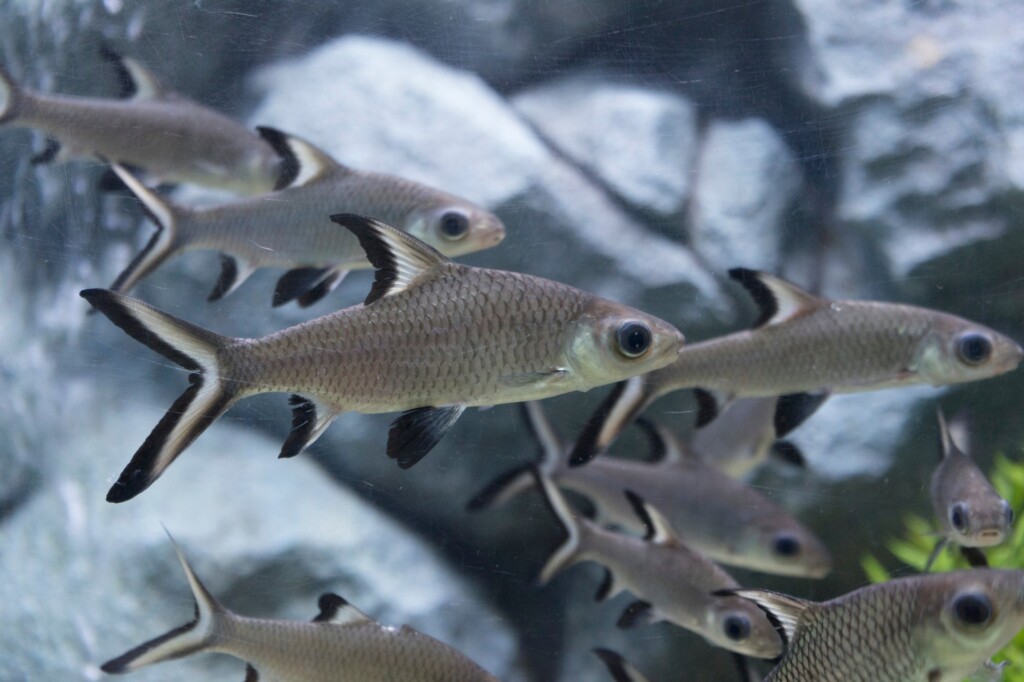
Breeding Note
If you don’t mind a little freshwater fish breeding difficulty, get a large breeding pond or commercial farms to reproduce this species. Also, check local laws regarding getting a license for this activity.
Maturity Age
If you succeed at breeding a Bala Shark, pay close attention to its growth and development until maturity around 3–4 years. Also, a group social structure should be provided for a well-adjusted domesticated Bala Shark.
Common Health Problems and Care Tips
Your Bala Shark may experience common big fish illnesses like stress from cramped tanks, ich, and swim bladder disorders. Fortunately, preventive measures and treatments can reduce or avoid the risk of these illnesses.
Preventative Measures
The following are Balantiocheilos stress prevention tips you can implement:
- Weekly water changes
- Avoid overcrowding
- Ensure strong filtration
- Perform routine maintenance and
- Provide proper grouping.
Signs of Stress
Part of Bala Shark healthcare is identifying signs of stress and acting immediately to resolve the problem. Examples of stress signs include Gasping, frantic swimming, and fin clamping.
Quarantine the sick fish and improve its living conditions. Scroll up for details on tank maintenance and diet.
Lifespan and Long-Term Care Considerations
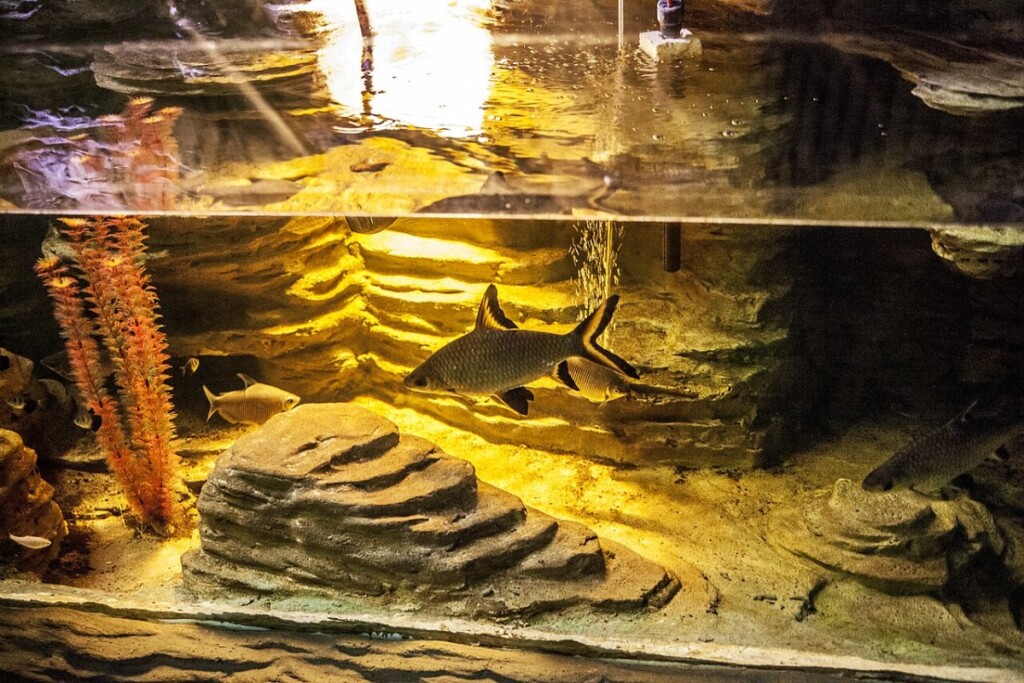
Making a comprehensive care plan for large freshwater fish like Bala Sharks improves their quality of life and maximizes their lifespan.
Your Bala Shark’s lifespan extends up to 10+ years in a well-maintained aquarium. Here’s how to achieve success:
Growth Expectation
Prepare for their large size and potential growth by giving your Bala Shark a long and wide enclosure. Remember that it reaches 12–14 inches in maturity. So, consider its solo size, group size, and potential tank companions.
Long-Term Needs
Other long-term aquarium fish care includes providing plenty of space within the enclosure for fast swimming, using a good filtration system to maintain clean water, and feeding them a consistent, balanced diet.
Conclusion: A Schooling Showstopper for Spacious Aquascapes
I hope you’ve enjoyed this Bala Shark care summary and are ready to add this large metallic sheen fish to your aquarium.
This species is a suitable aquarium showfish if you’re searching for one. So, let’s recap the best parts of this Balantiocheilos melanopterus guide to help you comfortably house a Bala Shark.
- It’s a peaceful species
- They love schooling
- They’re visually stunning
- They swim fast and horizontally
Because of their complex breeding processes and other peculiarities, it’s best to leave Bala Shark ownership and maintenance to experienced aquarists in large aquariums.
If you think otherwise, let’s hear it in the comment box below.



